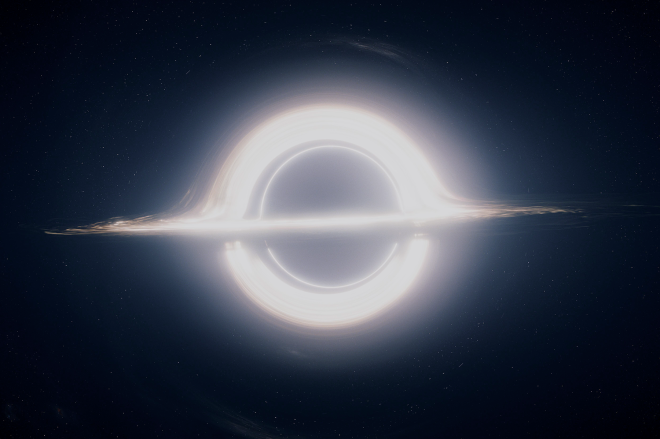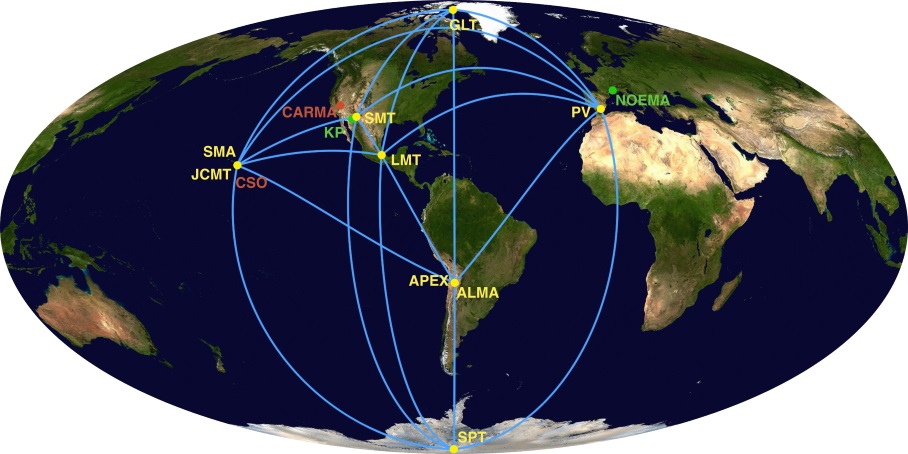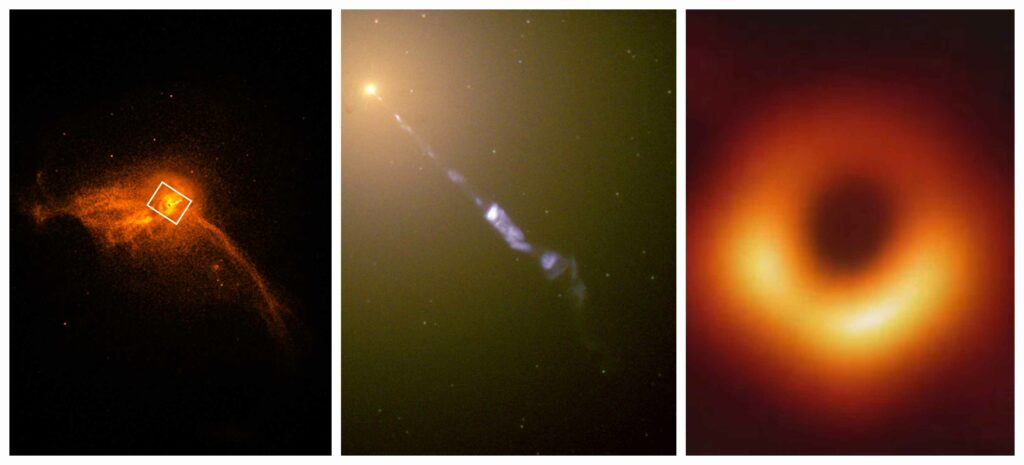The year 2019 was full of surprises, wonders, and even setbacks. From Greta Thunberg championing climate activism to quantum supremacy claims by Google, we saw massive movements and moments in this field. But one that stood out was the first-ever portrait of a black hole. Scientific community around the world rejoiced at the stunning image of this enigmatic phenomenon, and most of the scientific outlets have named it the best achievement in science of the year.
This is undoubtedly a great end to a decade. A decade that brought us unprecedented advancements in science and technology and has put us onto a path of even greater scientific enlightenment. The image of the black hole united the scientific community as everyone sat together, talked and marveled at the beauty and complexity of this universe.
Before this image, many theories were given about the black hole’s actual shape. Researchers constructed various images, but due to lack of ample data, those were not quite right. This conundrum was also explored in Hollywood movies, and Interstellar even managed to come a bit close with its depiction of a black hole. Nevertheless, we now have an accurate visual treat of what a black hole really looks like.

Achieving the feat
Bringing the image to life was not an easy task. Even in this age of technology and modern equipment, it took years to process the data by a big team of talented scientists. Some theories presented earlier called for recording the shadows that surround the glowing area of a black hole. For that, a vast network of telescopes was created around the world that ultimately came to be known as the Event Horizon Telescope or the EHT. To be able to visualize distant images in a high resolution and detail, a telescope should have a large aperture or diameter. This way, more light is gathered and can be used in image construction.
A technique called Very Long Baseline Interferometry (VLBI) was further honed by scientists and was used to create a network of telescopes that can aim at an object of interest at the same time. This network can then act together as one big telescope. To locate spacecraft and missions in outer space, and to capture photos of various things in the universe, this technique is preferably used. EHT’s aperture is substantial and is equal to the distance between the two stations at the South Pole and in Spain. This was cleverly arranged as the resulting setup ended up being almost the same length as the diameter of the Earth. The arrangement and spacing of the telescopes are also crucial in image resolution, and the farther they are, the better the quality gets.
For taking the image of the black hole, the team of scientists decided to test the VLBI technique and computer programs and algorithms on two targets, each with its complexities and wonders.

One of these was Sagittarius A* – the closest supermassive black hole to our planet. Located at the very center of our galaxy at a distance of 26,000 light-years away, this appears to be the biggest in size when seen from the Earth. But its existence in the Milky Way also posed a problem for scientists, who figured that they would have to clean out all the background noise and pollution in the data, and a complicated process was needed to filter it all out. Still, it offered an exciting opportunity to the researchers who ultimately chose it as a target, despite such issues.
The other target was the black hole M87*, which is located in the center of the galaxy Messier 87 at 53 million light-years away. It is massive, and to get an idea of its size, the fact should be noted that it contains a whopping 6.5 billion solar masses! It was also an exciting and intriguing choice for the researchers as it is an active black hole meaning that matter is continually falling in and out of it.
The particles also jet out of M87* at very high velocities (almost at the speed of light). Being that far away was yet another challenge in taking its picture. Katie Bouman, the computer scientist with the Event Horizon Telescope team who became the star and another highlight of this feat, very aptly described it as similar to taking the photo of an orange on the surface of the Moon.

Originally the EHT had eight locations around the world but in the later years, more telescopes were added to help analyze and refine the data. For the collection of the data, there was a need for having suitable weather for telescope viewing at each location and it took almost ten days to observe it all.
Valid calibration and synchronization of the telescope was an essential task which ultimately enabled EHT to have a resolution that was 4,000 times better than that of the Hubble Space Telescope. A considerable amount of data was obtained by the team, which was then transported to the primary location where it could be studied easily with high internet speed. It was in this central area, where the scientists managed to combine the data using various programs and algorithms and developed the first-ever image of the silhouette of the event horizon of M87*. The other target’s image is also in the process of being developed. NASA also contributed to this strenuous task, and several spacecraft were used to observe the black hole with varying wavelengths of light.
The genius minds behind the scenes
The team who made this wonder possible from impossible also deserves immense appreciation for their hard work. These researchers were recently honored with the Breakthrough Prize in Fundamental Physics for their efforts. The team was led by Shep Doeleman at the Harvard-Smithsonian Center for Astrophysics. He told in an interview that “For many years, I would tell people that we were going to image a black hole, and they would say, ‘Well, we’ll believe it when we see it.’ But when you finally come with robust evidence, when you make a breakthrough like this, then you have the satisfaction of really giving birth to a new field.”
As mentioned above, another scientist that almost became a household name in the field of science was Katie Bouman, who garnered worldwide attention for working on the algorithm that helped to make the final image of the black hole. She became an inspiration for many people, especially women working in STEM. She started working on the algorithm as a graduate student at the Massachusetts Institute of Technology or MIT. In a caption to her Facebook post, she wrote, “Watching in disbelief as the first image I ever made of a black hole was in the process of being reconstructed.” She was hailed and appreciated around the world for her groundbreaking work along with her team.

Also Read: Scientists are working to develop a black hole movie
Paving the way for scientific glory
Taking this image is no ordinary achievement. It is a big step in unraveling the mysteries of the universe. It can help us to test predicted theories and make observations about spacetime and celestial objects that have staggered humans since almost the beginning of the time. From working out and filling the gaps in Einstein’s theory of relativity to improving Hawking’s views on quantum mechanics, such type of data and knowledge are essential tools for figuring stuff out.
Einstein’s theory of general relativity was not really been proven for the black hole and other similar paradoxes. This project offers a more precise calculation of the mass of a black hole. The radius of M87 *’s event horizon was accurately measured, and a method of mass estimation was validated. General relativity equations can be used to provide an estimate of the size and shape of a black hole, which calls for it to be roughly circular contrasting other theories. The developed image showed that it indeed has a circular silhouette, thus proving the theory. This data provided information about formation and behavior, and some elements, such as the ejection of particles at the speed of light, are now offering new research interests for scientists.
As EHT continues to provide more data, new questions can now be answered, and studies can be done at an accelerated pace. Other areas can also get benefit from it, and it has also successfully ignited the fuel of passion and curiosity about the universe that has enabled scientists and researchers to come this far and will continue to take us to infinity and beyond!
Note Asterisk (*) is used to represent a black hole.

Maham Maqsood is a science communicator and co-founder at Scientia Pakistan. She is currently doing Masters in Biochemistry at the Middle East Technical University, Turkey. She has over five years of experience in science communication and outreach, collaborating with researchers, educators, and communicators to develop effective strategies and content for various platforms and events.

